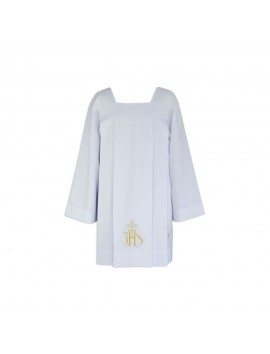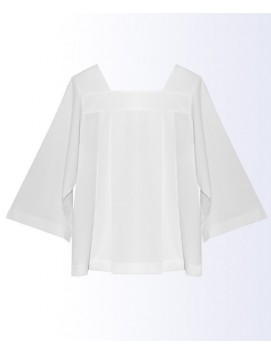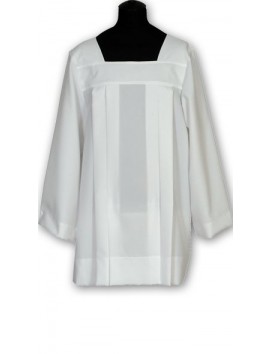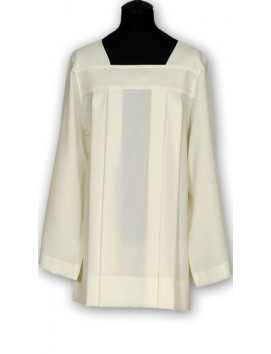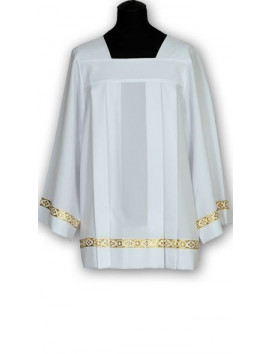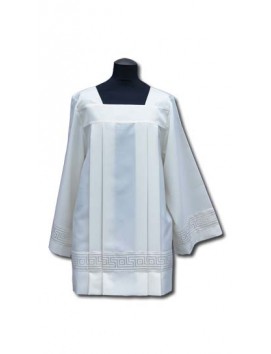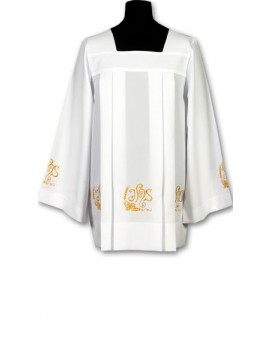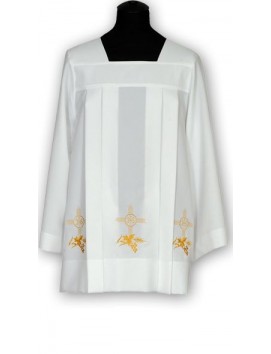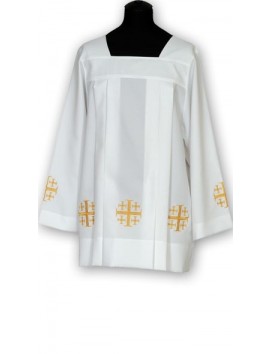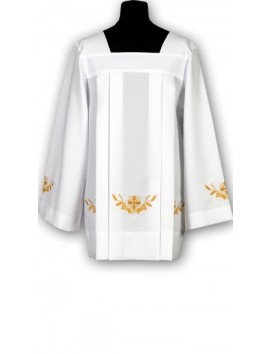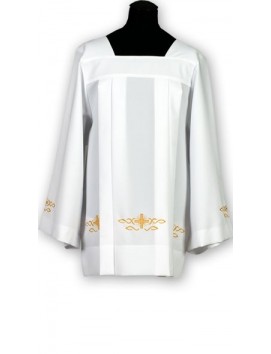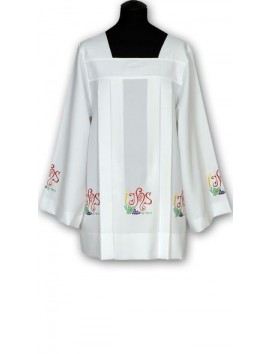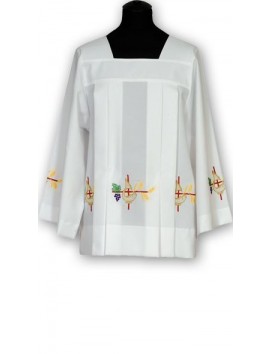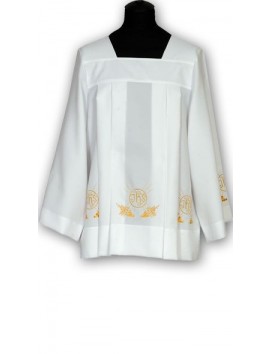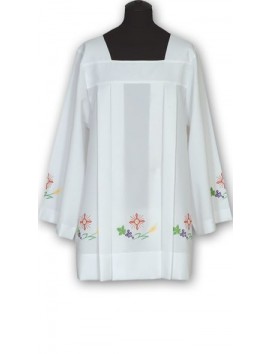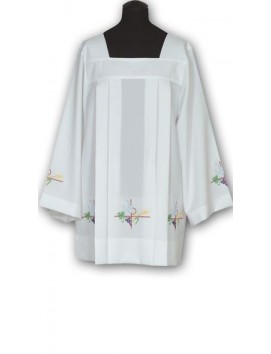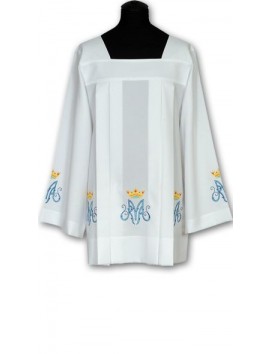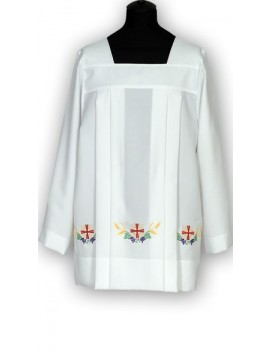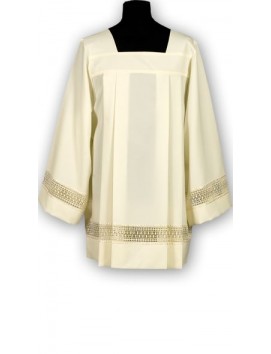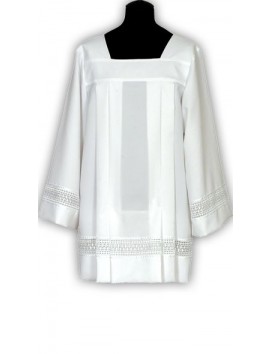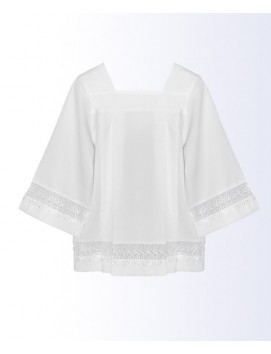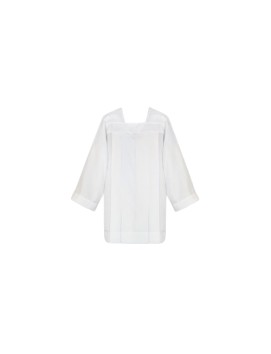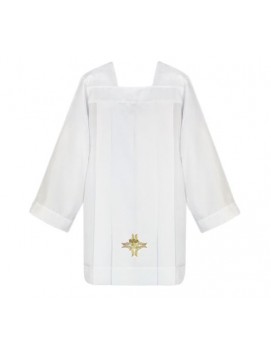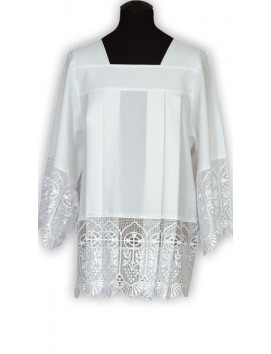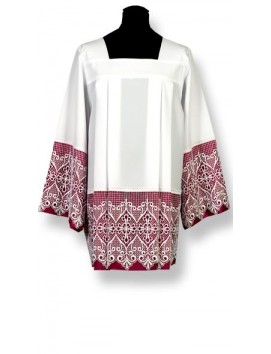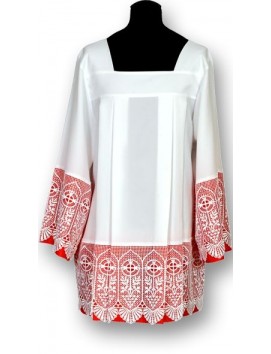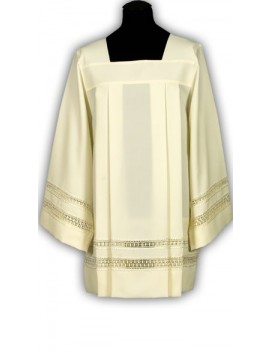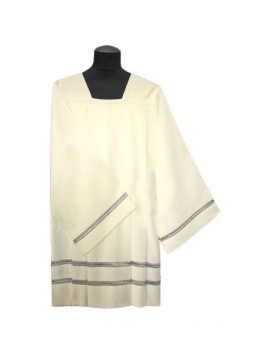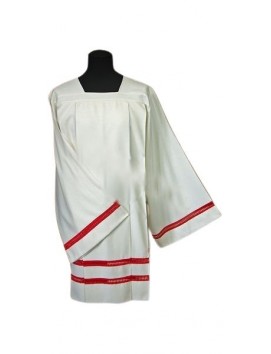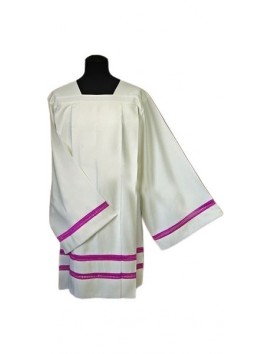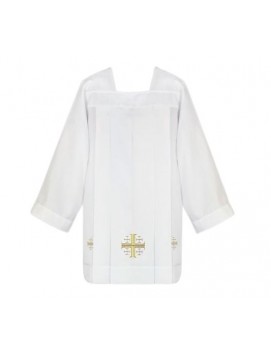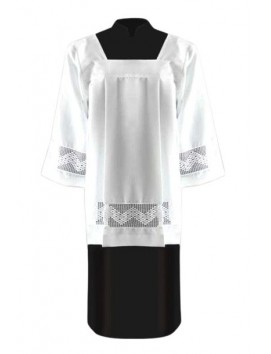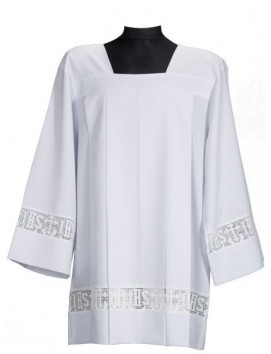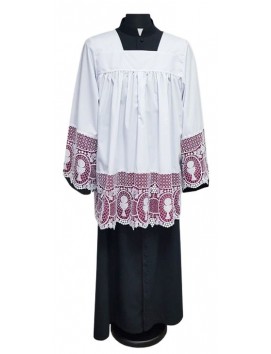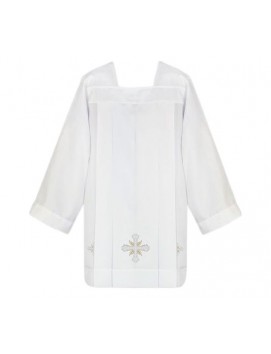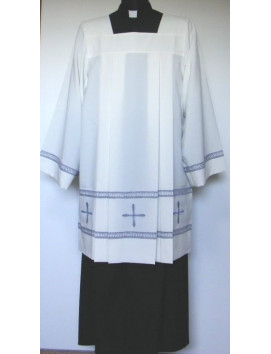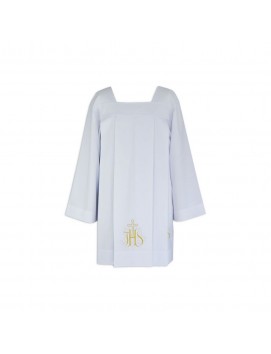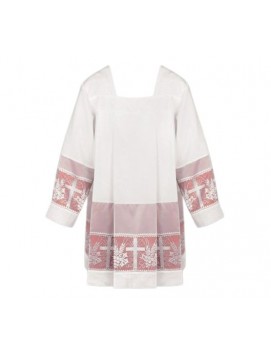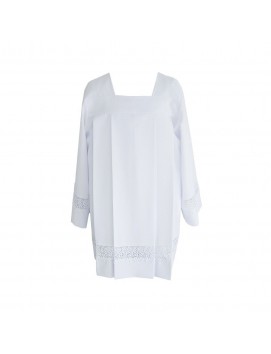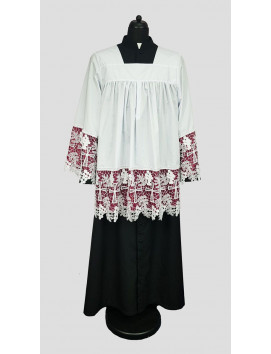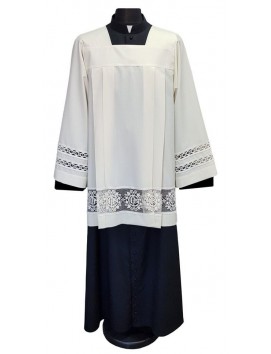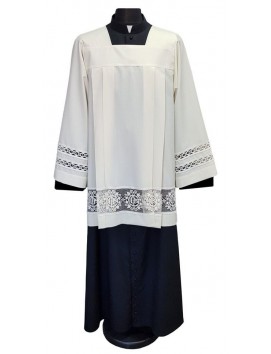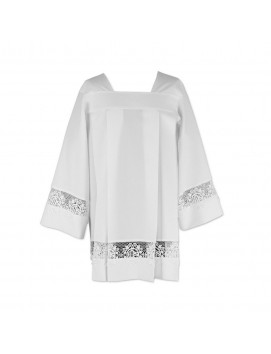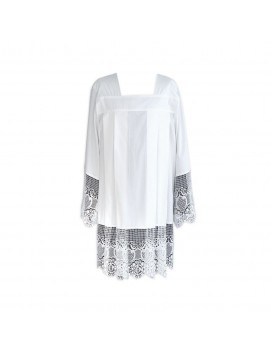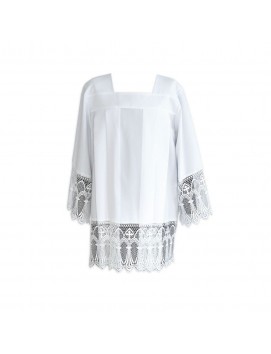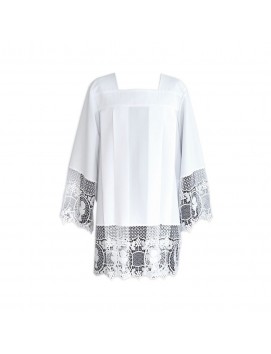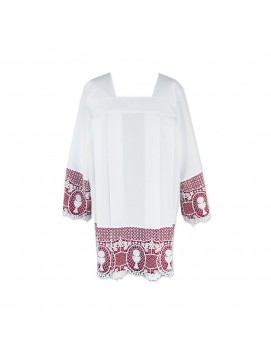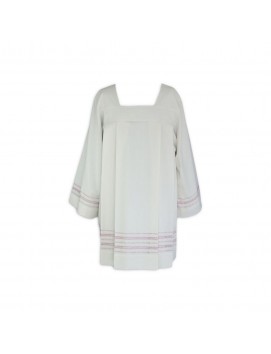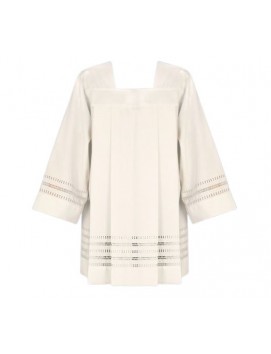Clergy Surplices
A clergy surplice is a liturgical vestment worn by members of the clergy during religious services in the Christian Church. It is a white, lightweight, and loose-fitting garment that is worn over the clergy's clothing and reaches down to the knees. Clergy surplices are typically made of cotton, viscose, polyester, or lace. The surplice is a symbol of purity and is worn to signify the clergy's role in leading the congregation in worship. Clergy surplices are available in various sizes and styles, including square neck, round neck, and lace and embroidery designs. Some surplices may also feature embroidered crosses or gold Alpha Omega symbols.
A clergy surplice is a liturgical vestment worn by members of the clergy during religious services in the Christian Church. It is a white, lightweight, and loose-fitting garment that is worn over the clergy's clothing and reaches down to the knees. Clergy surplices are typically made of cotton, viscose, polyester, or lace. The surplice is a symbol of purity and is worn to signify the clergy's role in leading the congregation in worship. Clergy surplices are available in various sizes and styles, including square neck, round neck, and lace and embroidery designs. Some surplices may also feature embroidered crosses or gold Alpha Omega symbols.
Imagine stepping into a grand cathedral, the air thick with reverence and history. As you enter the church service, you are greeted by priests adorned in their clergy wear, donning beautiful clerical vestments. One thing catches your eye as you gaze upon the priests leading the religious service: their striking white clerical vestments, known as clergy surplices. These ancient vestments, with their rich history and deep symbolism, play a crucial role in the Christian liturgical tradition.
What is a Clergy Surplice?
A clergy surplice is a liturgical vestment worn by members of the clergy during religious services in the Christian Church. It is a white, lightweight, and loose-fitting garment that is worn over the clergy's clothing and reaches down to the knees. Clergy surplices are typically made of cotton, viscose, polyester, or lace, symbolizing purity and signifying the clergy's role in leading the congregation in worship.
The Historical Journey of the Surplice
The surplice has a storied history, tracing its origins back to the 11th century in France or England. Initially, it served as a practical garment worn over fur-lined garments for warmth during services. Over time, it evolved into a symbol of clerical status and dignity. The surplice was adopted in Rome in the 13th century and has since become a staple in Anglican, Lutheran, and many Protestant religious services.
Variations and Styles
Clergy surplices come in various sizes and styles, including square neck, round neck, and those adorned with lace and embroidery designs. Some surplices may also feature embroidered crosses or gold Alpha Omega symbols, adding an element of elegance and sophistication to the garment. The choice of design often reflects the traditions of the religious community and the personal style preferences of the clergy member.
Symbolism and Significance
The surplice is more than just a garment; it is a symbol of the priest's purity, holiness, and dedication to their faith. It represents the baptismal garment received by Christians when baptized, signifying a new life in Christ. The surplice also helps identify clergy members leading the service, providing a sense of uniformity and solemnity to the liturgical celebration.
Who Wears a Surplice?
Traditionally, surplices are worn by priests, deacons, bishops, choristers, and acolytes during various liturgical services such as Mass, Evening Prayer, and other religious ceremonies. In some denominations, lay people participating in liturgical services may also wear a surplice over their regular clothing as a symbol of their role in the service.
Choosing the Right Surplice
When selecting a clergy surplice, consider the appropriate length based on personal preference and liturgical requirements. Some individuals prefer a shorter surplice that falls above the knees, while others opt for a longer length that reaches below the knees or even to the ankles. Additionally, consider the fabric and design that best suits your needs, whether you prefer a traditional, gothic, Roman-style, or contemporary surplice.
The Surplice in Modern Times
Today, the clergy surplice remains a vital component of Christian liturgical attire, symbolizing unity, diversity, and inclusivity within the church. It serves as a reminder of the clergy's commitment to leading their congregation in worship and the shared heritage of the Christian faith.
In conclusion, the clergy surplice is a versatile and meaningful garment that embodies the values of purity, tradition, and devotion in Christian worship. Whether you are a member of the clergy or a layperson participating in a religious service, wearing a surplice signifies a deep respect for the sacredness of the liturgy and a commitment to the Christian faith.

